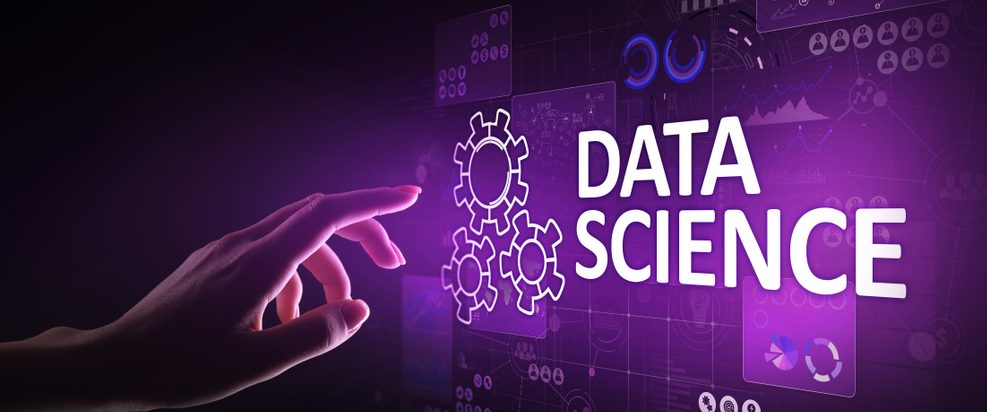By now, you have heard about data science and you may have made up your mind to become a data science professional in the future. You might be looking for information on how to become one, an opportunity to earn a top data science certification, or seeking a friend who knows data science to delve a little deeper into the subject matter.
Well, once you have decided to go with data science as your career, the first hour of learning will be running through the terminologies and concepts. This article acquaints you with the basic data science terms at a glance. This is for anyone who wants to learn data science, including professionals who live amid data scientists.
This does not cover everything about data science,but it helps to understand the basics or serves as a refresher to sharpen one’s knowledge.
1. Machine Learning
When humans train machines with historical data to do things faster than humans, that is machine learning. It is a method of data analysis to automate analytical model building. As a subset of artificial intelligence, the system learns from data, identifies patterns and makes decisions with minimal or no human intervention.
For instance: John likes songs with heavy intensity and fast tempo. If a machine is fed with 10-12 songs of the same quality, it will know that John will like similar kinds of songs. Then, when you feed the 13th song and ask the machine, “Will John like this?” The machine will answer ‘yes’ or ‘no’ by analyzing the tempo and intensity of the song fed to analyze. It catches the frequency through its past data records.
The growing volumes of data and affordable data storage enables a business to identify profitable opportunities and avoid unknown risks. Machine learning is intensively being used in industry verticals like finance, oil and gas, healthcare, retail, government, and transportation.
There are various models:
- Supervised learning
- Unsupervised learning
- Semi-supervised learning
- Reinforcement learning
Of these, supervised and unsupervised learning are most widely adopted in businesses.
In supervised learning, the algorithms are trained to find errors in outputs by feeding input and known outputs. The data points are labeled as ‘F’ for failed and ‘R’ for running. The learning algorithms receive a set of inputs along with their corresponding outputs. The algorithm learns by comparing actual output with correct outputs and find errors.
The methods like classification, regression, prediction, ensemble methods, decision trees, and gradient boosting are used in supervised learning. It uses patterns to predict the values of the unlabeled data.
It can be used to anticipate fraud in credit card transactions.
Unsupervised learning is used for data with no historical labels. The system does not know the output. The system explores the data to find some structure within.
The methods used are self-organizing maps, nearest-neighbor mapping, K-means clustering, neural network, Gaussian mixture, and singular value decomposition. It identifies segments of customers having similar attributes. This helps the business to initiate a similar kind of marketing campaign for this group of customers.
It is used for customer segmentation, recommendation, segment text topics, and identify data outliers.
2. Statistics and Probability:
Data analysis requires the learning of descriptive statistics and probability theory. It helps you to make better data-driven business decisions. Also, machine learning requires Bayesian thinking, the engine behind machine learning models.
As a data science professional, you should understand descriptive statistics, distributions, hypothesis testing, regression, conditional probability, priors, posteriors, maximum likelihood, and statistical machine learning.
- Descriptive statistics: The knowledge helps you to summarize a given data set which can be a sample of the population or represents entirety.
- Distributions: The distribution of a statistical data set is nothing but a listing or function that depicts the possible values of the data. As you organize it, you can predict the percentage of individuals/customers in each group.
- Hypothesis testing: It helps as an important tool in business development. Testing of different practices and their effects on business enables you to make informed decisions to grow your business in the future.
- Regression: The primary uses in business include optimization and forecasting. With regression analysis, you can help managers to predict future demand of products, fine-tune manufacturing, and delivery processes as per the market demand and curb the imbalance between demand and supply.
- Conditional probability: Bayes theorem is used for conditional probability and can be used to formulate business problems. Oil and gas industries generally use conditional probability. Utility companies can forecast periods of high demand and help management to take decisions.
- Prior probability and Posterior probability: This knowledge helps you to use Bayesian probability market research evaluation, new product development, pricing decisions, promotional campaigns, channel decisions, logistics of distribution, and business judgments.
- Maximum likelihood estimation: It is a technique used to estimate distribution parameters. When you a modeling problem, this will come in handy.
With these basics, you will be able to attend difficult machine learning problems and common real-world data science applications.
In brief, statistics helps to –
- Create experimental designs when your organization rolls out a new product. You can design A/B testing across geographic locations for pilot studies.
- Build a series of regression models to predict the demand for individual products to avoid over-stocking or under-stocking.
- Identify specific probability distributions of input data and transform the data appropriately.
3. Pandas:
Pandas is an open-source Python library built on NumPy. It helps you to conduct a fast analysis of real-world data, data cleansing, and data preparation. Also, it works with data from a range of sources like Excel sheet, CSV file, SQL file, or a web page. Pandas offer enormous functionalities for your more advanced data wrangling with Python.
The following might guide you through indexing techniques, handle missing values, data functionality, data visualization, and many more.
- Boolean Indexing
Series s where value is not >1
>>> s [~ (s > 1)]
- Select rows and columns
>>> df. ix [1, ‘Capital’]
‘New Delhi’
- Use filter to adjust Data Frame
>>> df[df[‘Population’]>1200000000]
- Drop values from rows (axis=0)
>>> s.drop([‘a’, ‘c’])
- Assign ranks to entries
>>> df.rank()
- Describe index
>>> df.index
- Describe Data Frame columns
>>> df.columns
- Info on Data Frame
>>> df.info()
- Summary statistics
>>> df.describe()
- Mean of values
>>> df.mean()
- Median of values
>>> df.median()
- Apply function
>>> df.apply(f)
- Convert integers to floats (or vice versa)
df.variable.astype()
There are many more commands. Here a few have been mentioned as samples to get an idea about how Pandas help data scientists to wrangle data.
4. Big data tools
Data is meaningless until it is converted into useful information and knowledge for decision making. There are several big data software available in the market, and as a data science professional, it is recommended to get acquainted with tools as much as possible. You might not use all in your industry, but an understanding takes you a long way.
Here is a list of 5 commonly used big data tools with its usage.
Apache Hadoop: It is a software framework to handle big data. It processes datasets through the MapReduce programming model. Hadoop has the ability to videos, images, JSON, XML, and plain text. It can be used for quick access to data, R&D purposes, as it is a highly scalable and available service resting on a cluster of computers.
Cassandra: Being an open-sourced distributed NoSQL DBMS, it can be used to manage huge volumes of data with high availability. It has no single point of failure and handles massive data at a faster rate. It has a log-structured storage capability with simple ring architecture.
KNIME: Konstanz Information Miner (KNIME) can be used for enterprise reporting, research, CRM, data mining, data analytics, text mining, and business intelligence. It supports all operating systems. It helps in simple ETL operations, integrates with other technologies, and has a rich algorithm set. It is highly usable, automates manual work, and has no stability issues.
Tableau: It is a software solution for business intelligence and analytics. It is being used by the largest organizations across the globe to visualize and understand data. With Tableau, you can create any type of visualizations you need. It is mobile-ready and interactive with shareable dashboards. It gives out of the box support for database connection and is razor-sharp in speed.
Kaggle: Kaggle is a data science platform. It is helpful for predictive modeling competitions and hosted public datasets. It is useful to have the best possible models for your business case.
To summarize…
I hope this knowledge base would inspire you to choose the top data science certification that is vendor-neutral, ensuring broad compatibility and introduces a lot toward concepts, technologies, and tools. This note helps you to understand how data science can be used to rule business. This is the first step or the needle compass toward your data science journey.
Keep learning more, exploring more, and establish your career in data science successfully.





Leave a Reply
You must be logged in to post a comment.